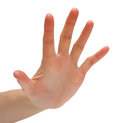 Movement of the elbow is mainly controlled from above by the shoulder. Should the responsible postural musculature no longer maintain the shoulders in proper alignment with the hips and spine, then the hinge joint functioning of the elbow will be called upon to compensate for a dysfunctional ball-and-socket joint of the shoulder. Such impossible demands placed upon the elbow joint soon lead to increased strain and wear and result in a sensitive and painful elbow joint.
Movement of the elbow is mainly controlled from above by the shoulder. Should the responsible postural musculature no longer maintain the shoulders in proper alignment with the hips and spine, then the hinge joint functioning of the elbow will be called upon to compensate for a dysfunctional ball-and-socket joint of the shoulder. Such impossible demands placed upon the elbow joint soon lead to increased strain and wear and result in a sensitive and painful elbow joint.
Most elbow problems, therefore, find their origin in misalignments occurring at the shoulder and in practice practically all elbow problems can be lastingly resolved by restoring proper postural alignment across the shoulder girdle and then down through the arm.The pelvis serves as the “foundation” of the body’s skeletal structure.
On this foundation rests the spinal column and shoulder girdle. From the shoulders extend the elbows and wrists and finally the fingers. This means that biomechanically speaking the fingers are the farthest joints from the body’s structural center found at the pelvis. This also means that the fingers are dependent on every prior joint for their proper functioning and that structural deviations occurring anywhere along this structural chain of command can negatively affect proper finger function.
Chronic finger joint ailments can be extremely painful and debilitating with symptoms including numbness, tingling, coldness, weakness, swelling, deformation and a variety of pain symptoms. The vast majority of these problems can be effectively resolved by restoring structural alignment throughout the entire musculo-skeletal system
Photo: sxc.hu